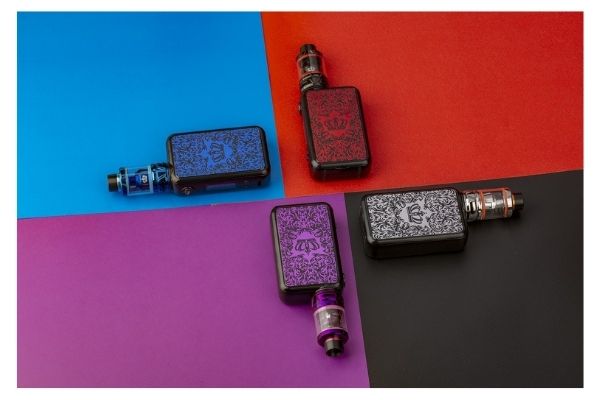【VAPE】What you need to know about vaping weed.
Vaping is an incredibly popular way to ingest weed, and the technology has far surpassed that of common rolling papers. While smoking marijuana comes with its own set of health risks, vaporizers allow for a controlled, cleaner experience.
Vaping is a kind of new thing, and there’s a lot you need to know about it before you get started.
For starters, vaping is the act of inhaling and exhaling an e-liquid. It’s often used interchangeably with “juuling,” but juuling is generally considered a derogatory term for vaping.
The debate over whether smoking pot is good or bad for your health rages on. However, a new industry that has recently emerged — vaping; receiving equally passionate attention. Are vapes safer than traditional joints and blunts? Or are they just as dangerous? Vaping, like traditional smoking, has advantages and disadvantages. Here’s what you should know.
What’s on the Vape market now?

The vape market is bigger than ever, with new devices, new flavours, and new compounds coming out constantly. So it’s fun to get a glimpse into what’s trending. While there are dozens of popular vape types, e-juices, which use a liquid containing cannabis compounds, flavourings, and PG/VG (propylene glycol/vegetable glycerin), are the most popular.
Ejuices are popular because they’re easy to use, and there are many different flavour combinations. They tend to work best with electronic mods, which have adjustable wattage and voltage settings so that you can control the amount of vapour produced.
The vaping industry is also experiencing a shift in its most popular compound. New products have hit the market: CBG, CBN, THCV, and Delta 8. These products offer consumers a flavorsome alternative to THC and CBD.
Consumers who want a product with mild effects, close to cannabis, may be interested in these new products since cannabis is still illegal in some areas. The shift in popular compounds has caused a stir among vaping manufacturers. But as new compounds gain popularity, cannabis vaping products will continue to appeal to consumers who don’t want to consume cannabis but enjoy cannabis-like herb products.
It is safe to say that cannabis vape manufacturers have a wide range of flavours to offer. Most vape manufacturers will have a few staple flavours that they offer, but some specialize in specific types of flavours and offer even more choices.
For example, some cannabis vape manufacturers offer fruit flavours, such as strawberry, cherry, apple, peach, blueberry, and pineapple. Other manufacturers specialize in savoury flavours, such as menthol, vanilla, and mint. No matter what type of flavour you prefer, some manufacturers cater to you.
Is Vape really safe for our body?

Vaping has become increasingly popular in recent years, particularly among millennials and Generation Z. Vaping devices are small — often the size of a cigarette — and users inhale the vapour rather than smoke. The devices also emit a vapour that’s often flavoured, making vaping more appealing than smoking. As with any new trend, scepticism about the safety of vaping is common.
In recent years, cannabis has become a dominant part of the American and Western European economies. Consequently, the main objective of cannabis producers, distributors, sellers and users are to guarantee vape safety weed.
Some studies show that vaping marijuana is less harmful to the lungs than smoking it. Still, these studies are often contested, and there is much less information regarding the aftermath of vaping cannabis.
A 2015 study found that e-pen vapour is 95% less harmful than smoke. That study's lead author noted, "The fact that vapor contains fewer harmful substances than smoke makes it a healthier alternative for smokers."
A 2017 study also concluded that vaping is safer than smoking. Researchers found that e-juices vapour contained 6.8 times fewer carcinogens than smoke, as well as 84% fewer toxicants.
These studies are consistent with a 2015 report by Public Health England that found vaping to be 95% less harmful than smoking marijuana.
Researchers also conducted a meta-analysis of 69 studies and found that vaping has fewer negative health consequences than smoking. A separate study found that while vaping isn’t risk-free, it’s significantly safer than smoking marijuana. None of this research provides evidence to suggest vaping is risk-free, but it does suggest that vaping is less risky than smoking, which could result in fewer long-term health risks.
First, it’s important to understand the difference between smoking and vaping. Vaping is considered safer because cannabis vape doesn’t burn. When you smoke, you burn plant material. The smoke you inhale contains not only inhaled cannabinoids but also the dangerous byproducts of combustion, such as tar and carbon monoxide.
When cannabis is burned, it also loses some of its therapeutic properties. On the other hand, Vaping uses heat to evaporate the cannabinoids and terpenes (the plant’s essential oils), which transforms them into vapour, completely removing any byproducts of combustion.
There’s still a risk of overdose and complications, like lung damage, from vaping cannabis. While vaping is far less harmful than smoking, it is still a delivery system for psychoactive substances like THC. And that’s still a drug, after all.
Conclusion

Vaping is inhaling and exhaling vapour produced by an electronic device (or “vape pens”). The vapour is inhaled through a mouthpiece and contains e-juice
Vapes use a battery to heat a liquid solution that typically contains cannabinoids, flavourings, and other chemicals, to vaporize the liquid, which the user then inhales.
While vapers like to debate which is safer, the facts are that vaping is safer for those who choose to consume marijuana. This is because vaping is free of the carcinogens that are emitted in smoke from burned marijuana. In addition, the vaping process produces very little second-hand smoke.
When marijuana is vaporized, it enters your lungs, but it’s not absorbed into the bloodstream. Instead, it moves directly to the lungs’ air sacs. Vaping marijuana, therefore, has a longer, slower effect than smoking, which can last for several hours.
Although the inhaled substance is the same in both cases, vaporization can affect how marijuana is metabolized. While smoking tends to cause marijuana to get metabolized relatively quickly, vaping causes its metabolism to take a longer period.
Vaping marijuana doesn’t appear to cause the same lung damage as smoking, but some users still report coughing or throat irritation.
That’s it for this time. Thank you so much for reading.
If you found this article helpful, please consider sharing it with a friend.

